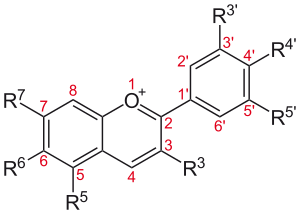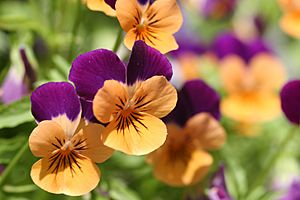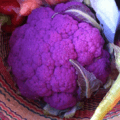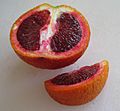Anthocyanin facts for kids
Anthocyanin is a chemical compound which makes the red colour in plants. For example, red cabbage has anthocyanins which make it red.
Function
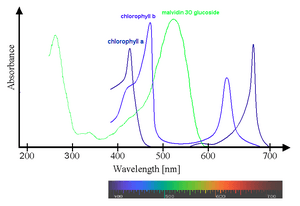
In flowers, bright-reds and purples attract pollinators. In fruits, the colourful skins also attract the attention of animals, which may eat the fruits and disperse the seeds.
In photosynthetic tissues (such as leaves and sometimes stems), anthocyanins have been shown to act as a "sunscreen". They protect cells from high-light damage by absorbing blue-green and ultraviolet light. Ionizing radiation can damage DNA.
There are some other suggestions. The red colour of leaves may camouflage leaves from herbivores blind to red wavelengths. The pigment may signal bad taste, since anthocyanin synthesis often comes with unpalatable phenolic compounds.
Making these pigments is done by a series of enzymes that are stuck on cell membranes.
Images for kids
-
Reds and purples of autumn leaves of the European bilberry result from production of anthocyanins.
-
Red cabbage extract at low pH (left) to high pH (right)
-
Conventional breeding was used to produce P20 blue tomatoes
-
Anthocyanins and carotenoids contribute distinctive pigmentation to blood oranges
See also
 In Spanish: Antocianina para niños
In Spanish: Antocianina para niños


